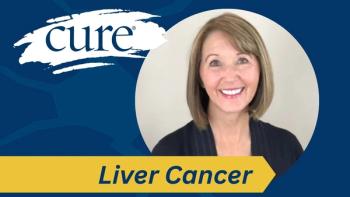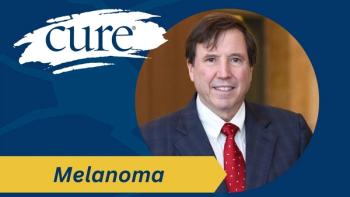
- CURE® Spring 2021 Issue
Treatments for Multiple Myeloma Are Transforming Lives
The biggest fear for many patients, according to an expert from The University of Texas MD Anderson Cancer Center, is when they hear that myeloma, for most patients, is not curable. However, she notes that every few years patient survival is increasing.
If you receive a diagnosis of multiple myeloma, the first step is to not panic. The second? To educate yourself as much as possible, according to Dr. Krina Patel, an associate professor in the Department of Lymphoma/Myeloma, Division of Cancer Medicine, at The University of Texas MD Anderson Cancer Center in Houston.
Patel, who presented treatment options for patients with new diagnoses of multiple myeloma during CURE®’s Educated Patient® Multiple Myeloma Summit, talked with CURE® about new treatments for the cancer, what to expect during treatment and what’s next.
CURE®: How has treatment for multiple myeloma transformed over the past five years?
Patel: VRd (Velcade [bortezomib], Revlimid [lenalidomide], Dexamethasone)— that’s sort of our standard care, induction therapy for myeloma — used to be considered a novel therapy. Before, we just had steroids and melphalan, which we’ve been using for probably decades to treat myeloma. But then we (discovered) targeted therapies such as Velcade (bortezomib), which is a proteasome inhibitor. It really goes after the machinery in the myeloma cells that makes all that protein we watch. I consider it a targeted therapy in that sense …. And then there’s lenalidomide (Revlimid), an immunomodulatory drug that helps your immune system fight the myeloma. But it’s also chemotherapy that works a little bit differently to kill that myeloma compared with Velcade. Steroids kill myeloma, but they also decrease inflammation that you might have. ... So, using that combination was really novel. Putting them together to synergize, to kill that myeloma, was actually a revelation to the induction treatment.
What can patients expect from stem cell transplant?
It’s an acute process for approximately six to eight weeks, and then it becomes more of a chronic kind of evaluation for three months. In the acute process, it takes approximately a week to collect your stem cells — that’s usually done outpatient. You get high-dose growth factors to help those stem cells really come out, grow in your bone marrow and then come into your blood. And then, similar to a dialysis session, they use a machine to take those stem cells out. So, it’s not a surgery; it’s a procedure.
You have a line placed that they attach to one end of the machine and there is another line coming back in. As your blood goes through this machine, they take out the stem cells and they give you back everything else. It’s connected to you, and it usually takes three to four days for most people. (You’ll be connected the machine) for a half day, each day, to get those stem cells collected, and then they freeze them and you take a few days off … Once you’re recovered from that, you get your high-dose chemotherapy. It’s not really a transplant; it’s high-dose chemotherapy, followed by stem cell rescue.
Once you complete your chemotherapy, two days later you get the stem cells. It’s like a blood transfusion. They bring them to your bedside, they thaw them out a little — I call it a “flambé” because it puts patients a little bit at ease. We give it to you just like a transfusion. It only takes 30 to 40 minutes, maybe an hour. Then, it takes about two weeks for the stem cells to find the bone marrow and start regenerating your blood cells (white blood cells, red blood cells and platelets) again. Once those are closer to normal, patients are monitored for a couple more weeks with labs and continue some antibiotic and antivral prophylaxis as the white blood cells are still naive. Around three months post-transplant, patients start some type of maintenance therapy. Six months after transplant, they start receiving certain immunizations again. This is really when most people feel back to 100% themselves.
What are some common misconceptions?
The biggest fear for many patients is when they hear that myeloma, for the majority of patients, is not curable. They think it’s the end of their life, and I can imagine what it’s like to hear that you have a disease that’s not curable. But the big difference is that it’s really treatable. And every few years we’re actually extending survival for patients. Some of my patients are surviving for decades — not just years, but decades. And I know not everybody is in that category, but that’s our goal: to give you the best quantity of life as well as quality of life.
The other misconception is that everybody with myeloma should get treated a certain way. … In myeloma, we have high risk versus standard risk, and patients (are treated) differently based on what their myeloma is. You want to individualize treatment to a certain degree and that’s why that expert opinion really matters.
What research is being done to increase survivorship in high-risk patients?
Some of the really cool stuff that’s happening right now is in CAR-T cells. There are already trials that are ongoing, such as KarMMa-2 and KarMMA-3 and KarMMa 4. KarMMa 2 including patients with high risk disease, who had early relapse after first line therapy. One cohort received CAR-T cells after auto (stem cell transplant) as well if they did not have an optimal response. KarMMa 3 is a phase 3 randomized clinical trial for patients in lines 2-4 of treatment who get bb2121 (idecel) or a (standard of care) myeloma treatment. KarMMa 4 is currently also ongoing and evaluates Ide-Cel in high risk patients after they receive a few cycles of induction therapy with KRd, VRd or D-VRd. …We’ll hopefully have results from some of these trials soon. I’ve seen some of my high-risk patients in the relapsed or refractory setting go onto these trials and do well – I’m hopefull that incorporating such powerful therapies earlier in the high risk patient treatment pathways will improve outcomes substantially.
This interview has been edited for clarity and conciseness.
For more news on cancer updates, research and education, don’t forget to
Articles in this issue
over 4 years ago
Our Microbiome: A Reflection of Ourselves?over 4 years ago
You May Have Second Thoughts When Receiving a Cancer Diagnosisover 4 years ago
Making Strides in Ovarian Cancerover 4 years ago
Tag Teaming Liver Cancer Careover 4 years ago
Positive Thinking Is Powerful During and After Cancer Treatmentover 4 years ago
Advances in Second Opinions For Cancer Treatment Decisions



